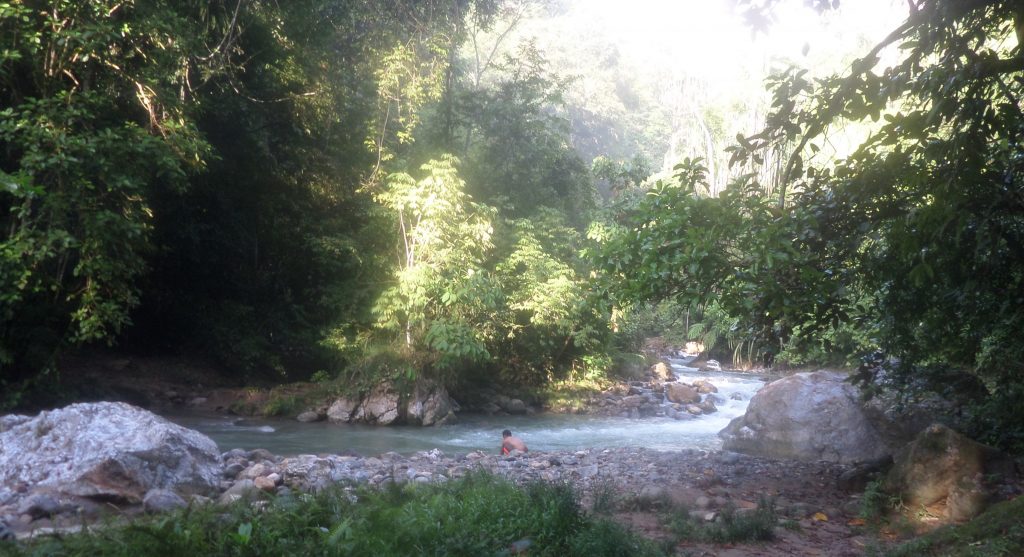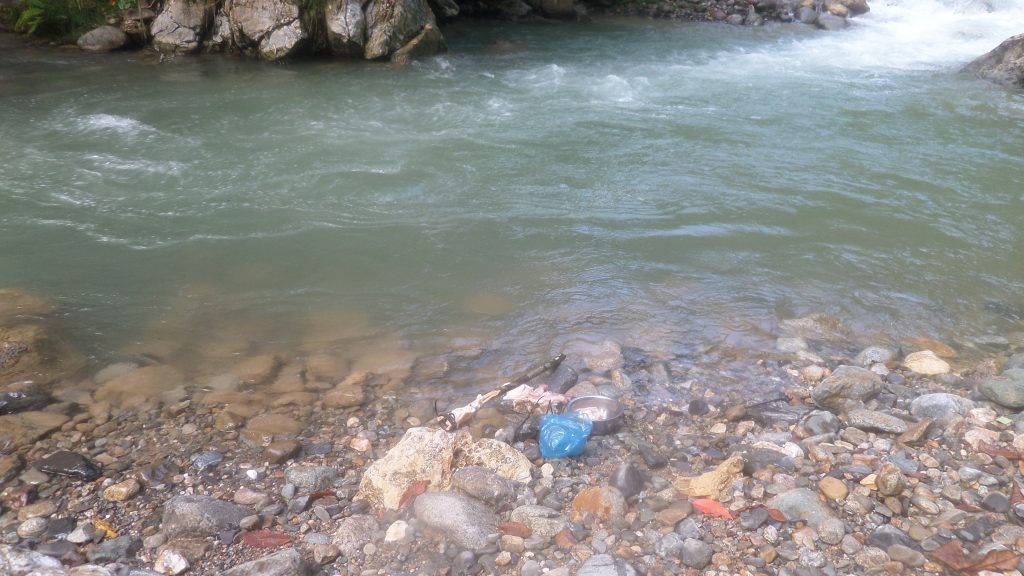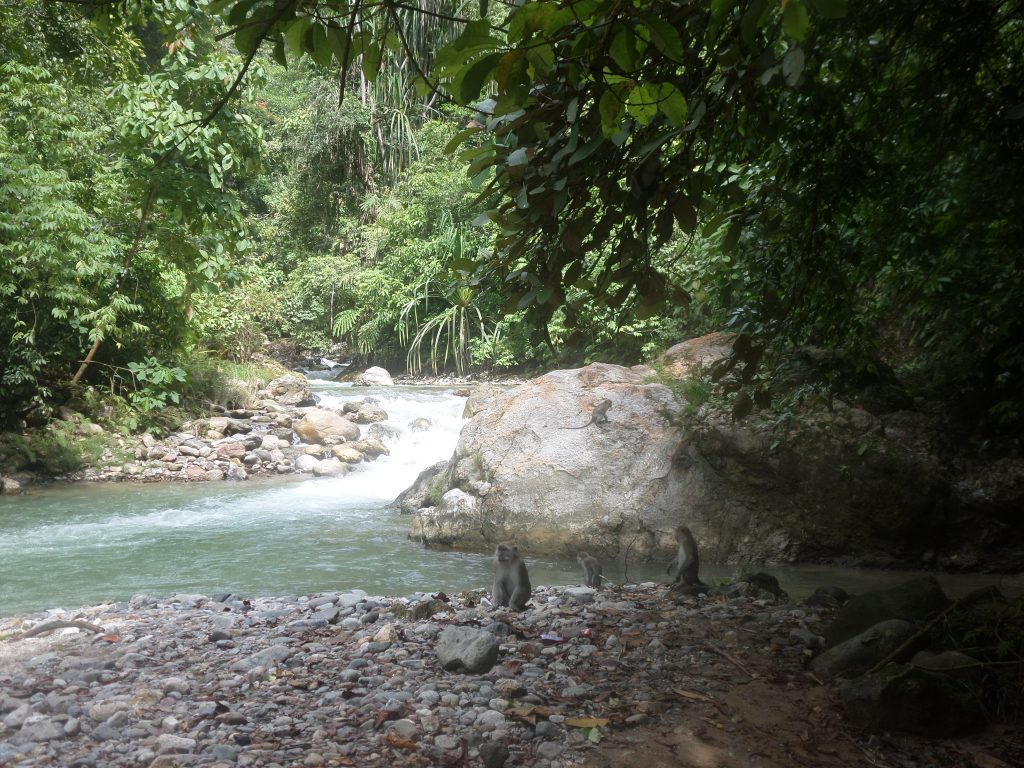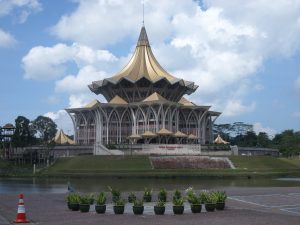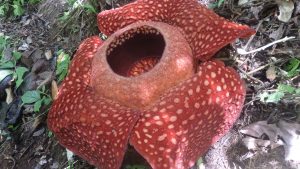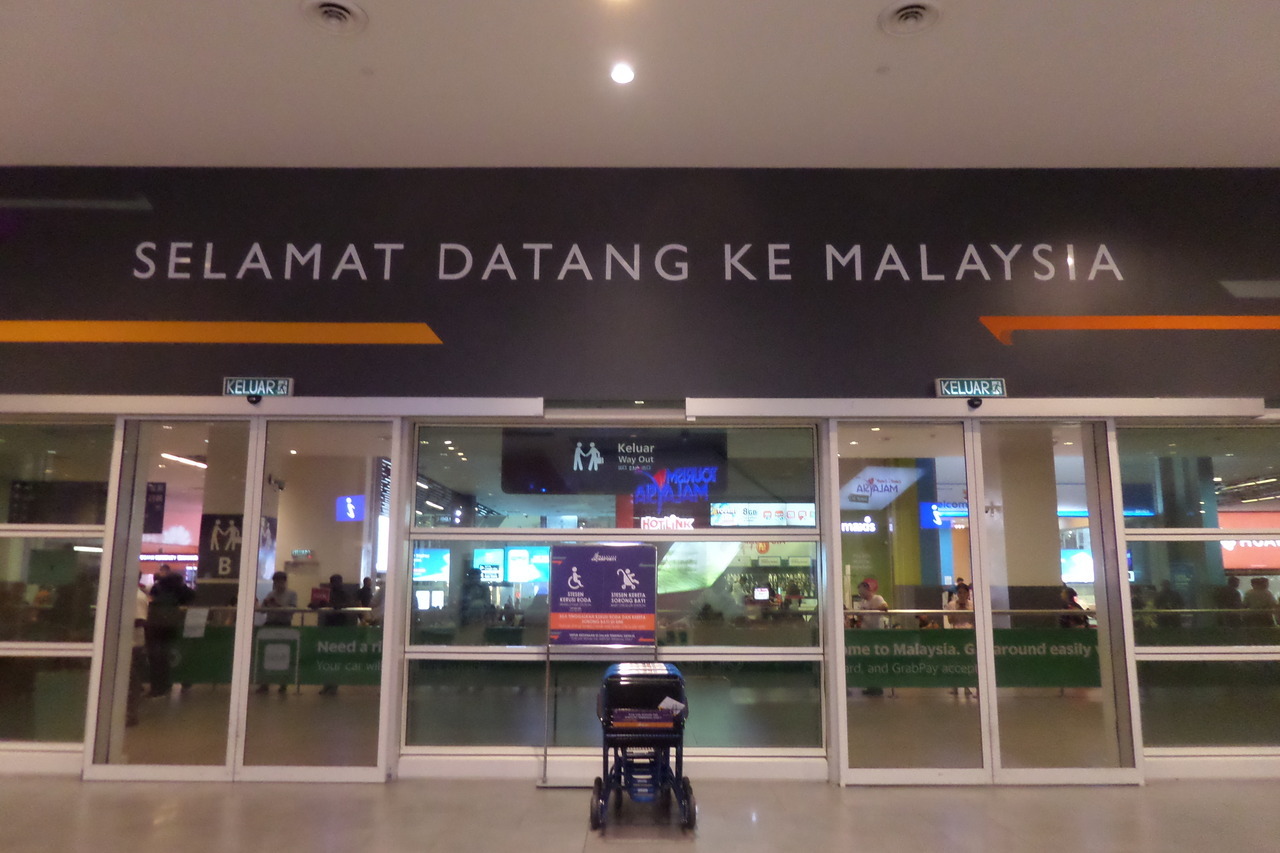1. Where is Gunung Leuser and what can you see and do there?
Gunung Leuser is one of the largest and most famous nature reserves not only in Sumatra, but in the whole of Indonesia. It is also a UNESCO world heritage site. It is one of the very few places all over the world, where you can see orangutans in the wild, in their natural habitat, along with gibbons, siamangs, Thomas leaf monkeys and other rare to see animals. The area is also home to the Sumatran tiger, the Sumatran elephants and the Sumatran rhinoceros (yes, all of them are called “Sumatran”, they are a special breed), but you are not likely to see them, unless you venture very deep into the jungle and spend at least a week or two there.
The jungle is of course an extremely interesting place in itself, even if you don’t meet an awful lot of big cats and other beasts (you will definitely see orangutans, though). The giant trees and lianas, the impenetrable jungle floor, the birds singing all around you – these are all very special experiences that you will remember for a long time.
Most people visit Gunung Leuser primarily because they want to see the orangutans, but I think the other animals and plants are just as worth the trip.
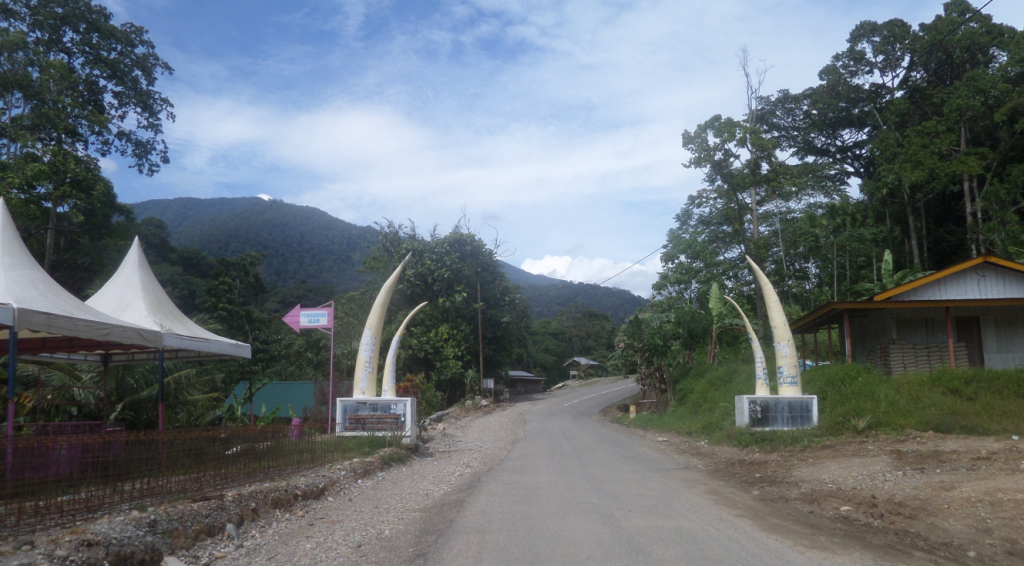
2. Bukit Lawang or Ketambe?
There are two main entry points to the national park: Bukit Lawang and Ketambe. The former is very near Medan and it is easy to get there, while the latter is hard to approach from Medan, and even by private transport, it takes at least 8 hours without stopping. It took me more than 9 hours in a taxi with two stops for coffee and lunch.
2.1 Bukit Lawang
It is not surprising then, that most people will choose Bukit Lawang. While it is not an entirely bad option, I would strongly advise against it. In Bukit Lawang, the orangutans are “semi-wild”, which means they were rescued from captivity from some of those nasty people, and placed in the orangutan sanctuary near Bukit Lawang. There, they used to feed them regularly, and the orangutans didn’t only get used to humans, but they learnt to “depend on them”. Now the program is not running for some reason, so there is no official feeding, but the orangutans were obviously not updated on this. Although they are said to be able to find food for themselves, there are so many tourists visiting their home, that they are looking forward to meeting them and getting some free lunch (and with this, many people say, some human diseases, too).
When they do meet the tourists, some of them start to play a very nasty and very dangerous game. They hold the arms of a tourist they select, draw him or her aside, and start to bite his or her fingers. They know very well, that at this point, the tour guide will give them food as a kind of ransom, but they carry on chewing on the tourist’s fingers until they get enough bananas. You can see numerous videos on Youtube about this.
Some tourists seem to enjoy this closeness, but I personally think this is only a little different from a circus or a zoo. If you enjoy that, go for Bukit Lawang. (There is a much less circus-like place in Malaysia, where you can see semi-wild orangutans: in Semenggoh Nature Reserve near Kuching.)
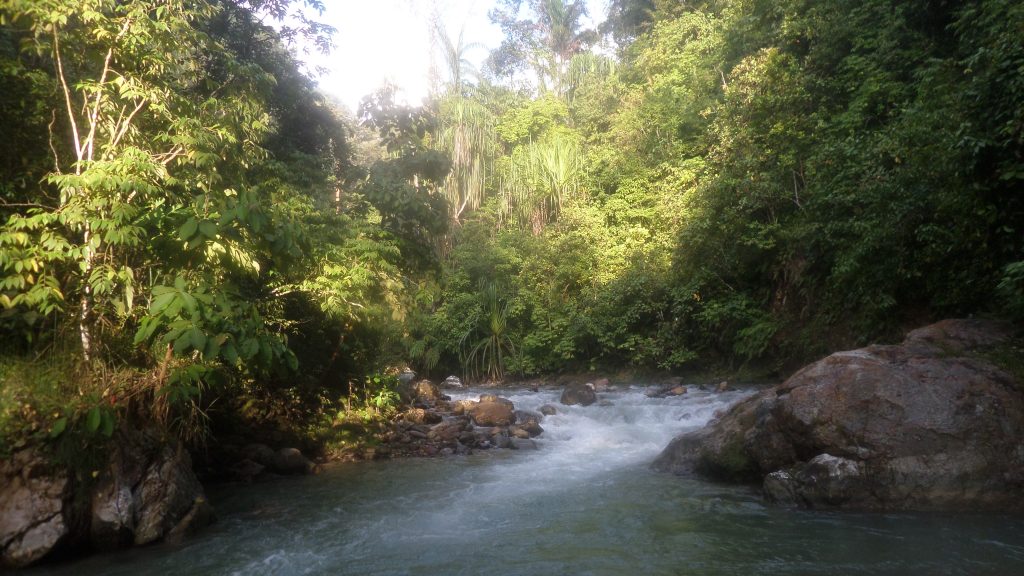
2.2 Ketambe
On the other hand, if you really want to see orangutans in their natural habitat, the ones who have never been captured and fed by humans, the ones who would never approach humans either for food or for any other reason, then go to Ketambe.
Orangutans live very high on the trees, they avoid danger including humans, so you will definitely not be holding hands with them in Ketambe. But you will have the chance to see them build a nest for their afternoon nap and for the night, you will see them eating high in the canopy, you will perhaps see how the mother is teaching her baby to climb – I saw all of these, and I can assure you that I enjoyed it much-much more than touching the poor orangutans who used to live with humans in captivity.
In Ketambe, you don’t look down to see the orangutans – on the contrary, you must look up so high that you will need a break every few minutes if you don’t want to suffer from a bad neckache.
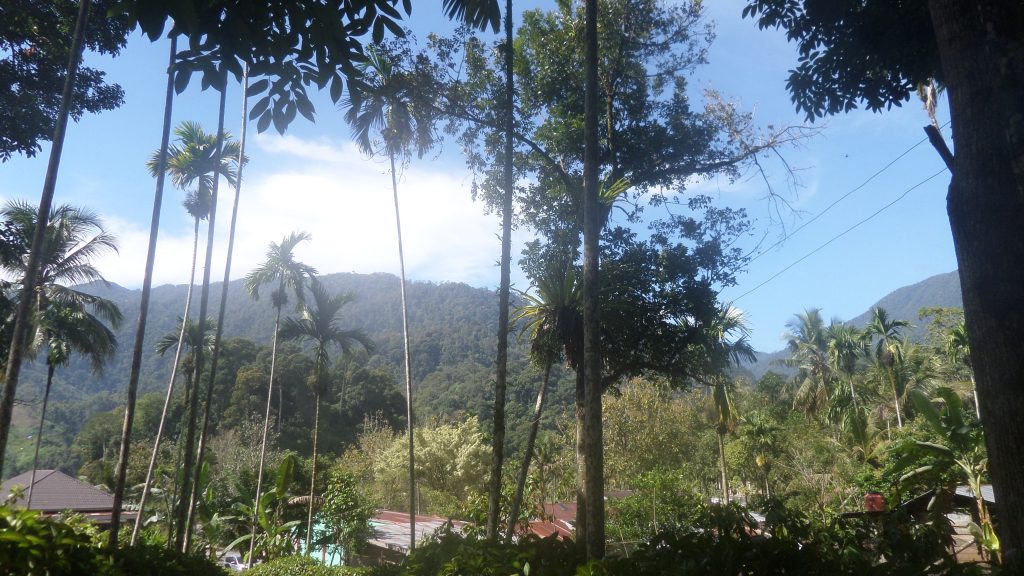
3. Preparation
For the rest of this post, whatever I say will refer to Ketambe. Some or most of it will probably be valid for Bukit Lawang, too, but I only have personal experience with Ketambe.
3.1 Finding a guide
The most important thing will be to find a good guide. You probably can’t do it yourself, and even if you tried, local people would not be happy with it – they make a living from providing service to tourists there. And basically, I think it is just too dangerous to try to go without a guide – this is not a typical hiking trail with signs and clearly marked paths, so unless you want to risk getting lost or attacked by some jungle creatures (the smaller ones are the most dangerous), you should pay for the services of an experienced local guide.
The best way to find one is using internet forums and blogs like this, and see what other people say about the particular guides they have used. Besides this post, you can try searching on Tripadvisor and other travel blogs, and also check the Facebook pages of the ones you have found. Don’t go with someone who doesn’t have references.
I decided to use a young guy called Alex. He has a website and a Facebook page too (Alex Ketambe), and he had very good reviews on Tripadvisor, although not too many clients yet. He was a good guide, but the service was not always very good. He seemed knowledgeable about the animals and plants we saw, he could explain me things like what the particular plants are used for by locals, how the animals we say live and what they eat and how they behave, so this part was very good.
But there were a few negatives, too. He was slow to reply my messages, and he failed to reply me on the day I was travelling to Ketambe too, and that made me a little worried. Then he didn’t manage to organise everything properly. We were supposed to have a helper and a porter, but when we arrived at the camp (where we spent the night), there was only one guy, who was cooking lunch for us, and who disappeared after lunch and never came back. This meant that Alex had to do the cooking, and we couldn’t move very easily, because there was no porter either. He also seemed reluctant when I asked him after lunch if we were going for a little hike – he wanted to spend all the remaining time of the day at the camp.
Altogether, I think there are better options. Even if he could explain things about plants and animals, the service altogether was not satisfactory. He did organise a shared taxi for me from Medan to Ketambe and back, but he failed to tell me all the necessary things that I was supposed to know. For example, I was expecting a minibus, but it turned out it was a car. It was very confusing, because no-one spoke English, and Alex didn’t reply my Whatsapp message either.
Everyone I talked to seemed to be talking about a certain Johnny – maybe you can try to collect some information about him.
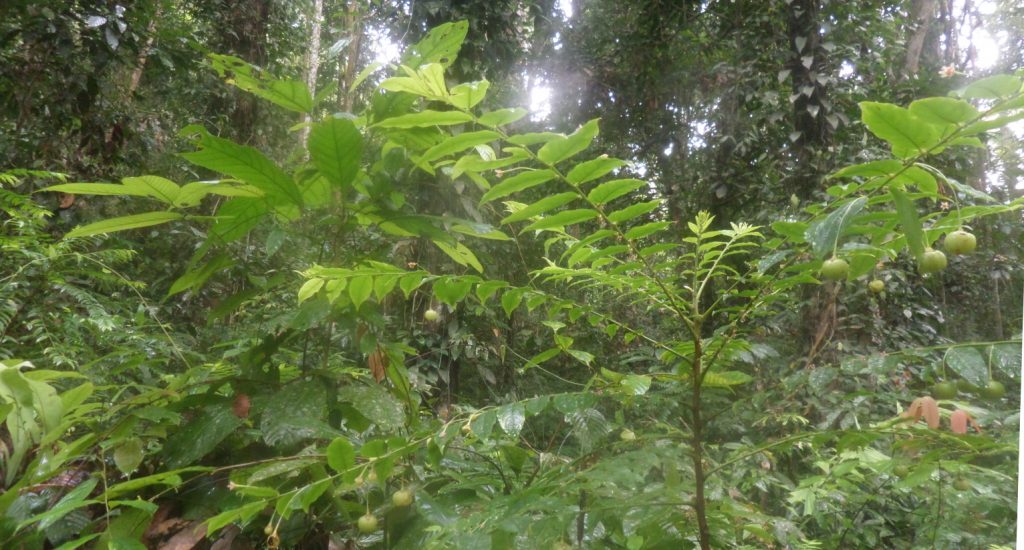
3.2 Finding accommodation
You should decide if you want to book a guide and accommodation separately or in one package. Both the guides and the guesthouses will provide both, plus transport from and to the airport in Medan (or some other place, I suppose but most people will come from Medan).
Whatever solution you choose, you will be able to tell them which guide or which guesthouse you want. I decided to book the two separately though. I contacted Alex, booked the tour and the transport with him, and booked accommodation separately. I decided to choose Pondok Wisata, a simple guesthouse in a beautiful garden. They have various types of rooms and bungalows, but I decided to choose the cheapest for 100.000 IDR. It was a rather spaciou room with a large double bed with a mosquito net. The attached bathroom had half open walls, and there was no hot water, but it had a western toilet. To be honest, I couldn’t care less: I needed to spend one night before and night after the jungle trekking there, and the most important thing was to have a bed after the two nights spent in the jungle sleeping on a very thin “mattress”, which gave me a good backache after the second night.
Pondok Wisata had a very comfortable large bed, and that was all I needed. They also serve food – just like every single guesthouse in the village.
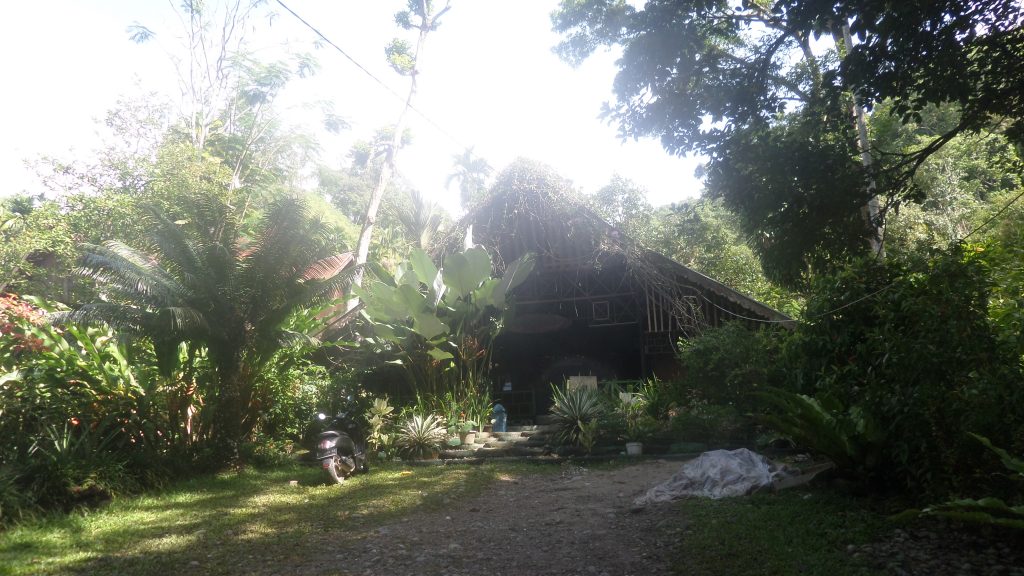
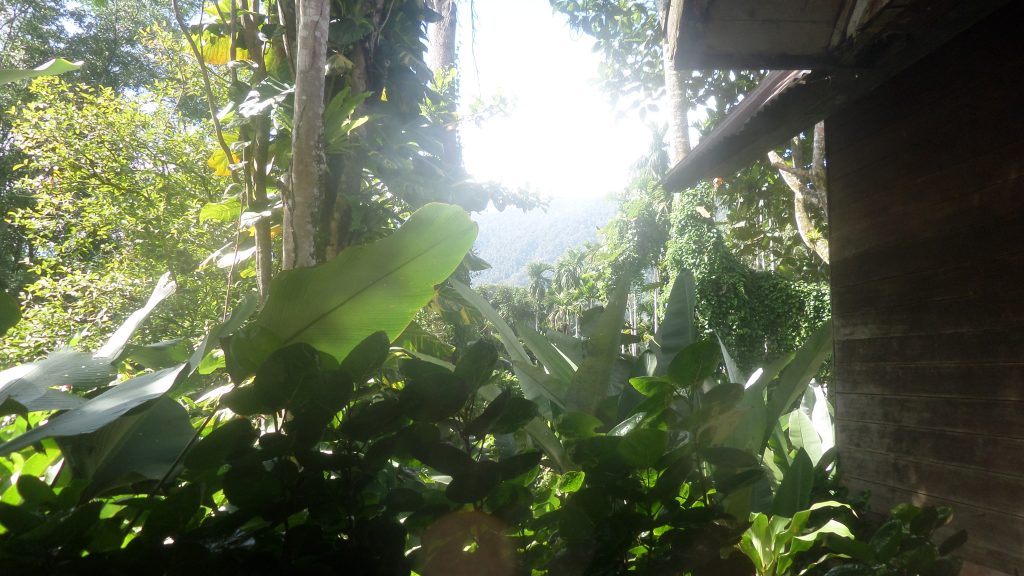
3.3 Planning your jungle adventure and stay
Before you book your guide and your accommodation, you will have to decide how much time you would like to spend in the jungle. I went for the most usual 2 nights 3 days tour, which allows for enough time to see the animals and the plants without getting too tired of the jungle experience sleeping in a tent on the floor, getting bitten by every kind of ants and whatnot (I did!), and getting too tired of trying to find a toilet plot while looking at every single leaf to check if a deadly viper is sitting on one of them or not.
If your main concern is whether you will have the chance to see orangutans during this time, rest assured that you will. Most people, myself included, see one or two on the very first day, and a couple more during the rest of the time, too. However, I only saw a gibbon and a siamang on the second and third day, so if you want to maximise your chances, go for at least a one night 2 days trek.
If you are not comfortable staying for the night in the jungle, you can also ask for day trips and return to the guest house every night. This will of course include a lot more hiking there and back, and you won’t go very far from the village. YOu don’t have to, by the way, to be able to see the orangutans.
3.4 What to bring and what to expect in the jungle
Your guide should update you about this, but not all of them do – mine didn’t do a very good job, for example. So here are a few tips for you.
A torch is absolutely necessary. You will not be able to see anything after 6pm, should you want to go to pee or simply find something in your backpack.
Bring a powerbank. If you don’t have one, it’s high time to invest in one. In Indonesia, I bought a good one for about 300.000 rupees.
An umbrella is absolutely useless in the jungle. Bring a raincoat, and if possible, one that has the pants, too – a complete suit. Long sleeves and long pants and closed shoes/trainers are a must! There are leeches everywhere, and other insects will bite you all over if you are wearing short sleeved T-shirts. Leech socks should be provided by your guide – they are necessary! The leeches will otherwise find their way to your skin.
The trek is not very hard even for elderly people. You may, however, have to negotiate thick jungle sometimes, when your guide will have to use his machete to cut some way through the plants. At other times, you will have to creep or slip below trees or other plants. But I learnt something from my guide, whose father always said to him:
Whenever you go to the forest, you must always wear a hat and bring a stick with you.
The hat is to protect you from snakes who may attack you from the branches above, while the stick is good to help you climb and walk, and also as a self-defence weapon (snakes again, yes).
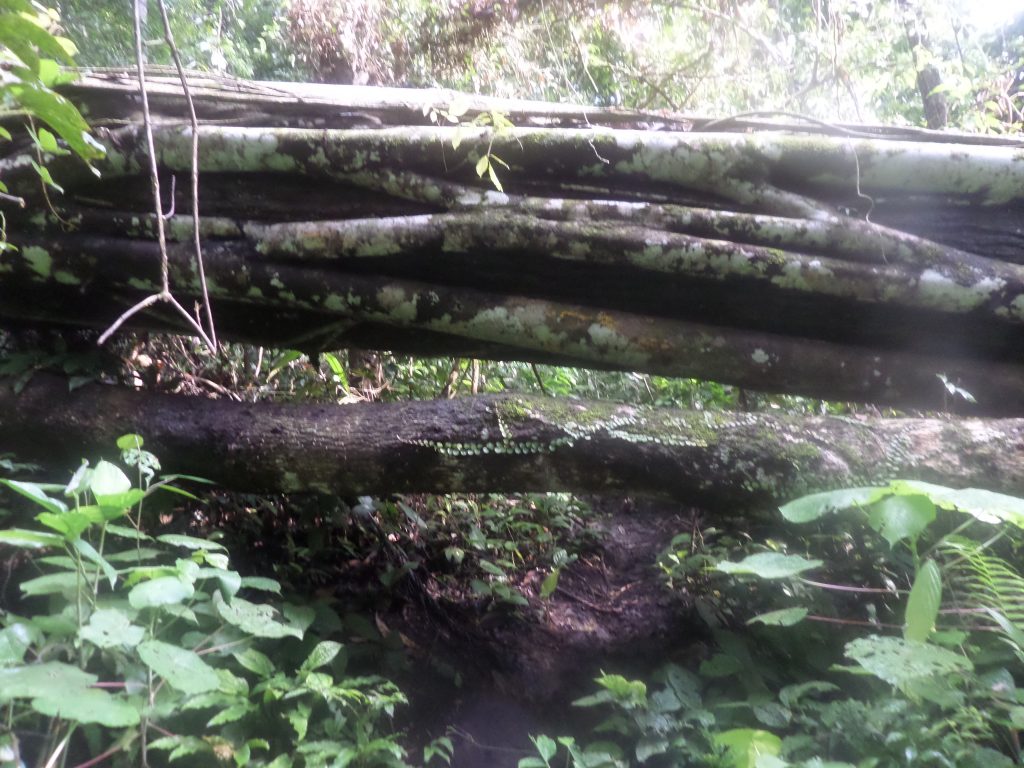
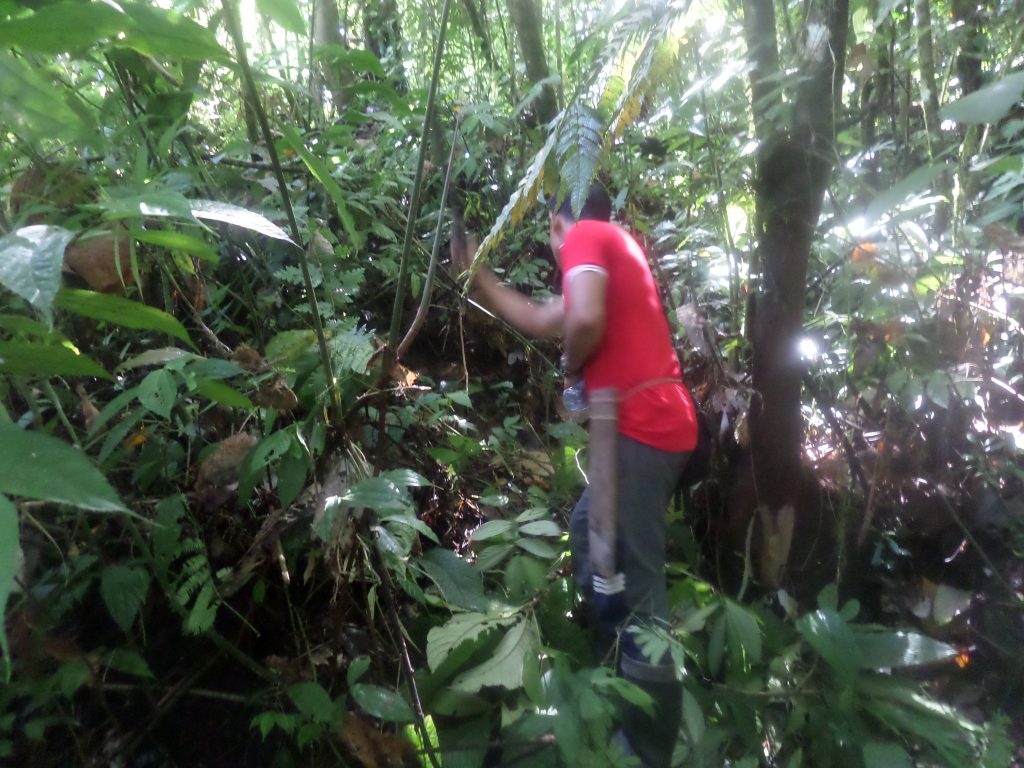
Bring slippers with you too. I didn’t, and I had a problem when walking to have a shower in the river, walking on the pebbles is very uncomfortable. Bring your towel, a change of clothes and underwear, and of course your toiletries.
Bring something that you can use as a pillow. Your backpack will be OK for that if you have enough soft clothes to fill it with on one side. A sleeping bag is also crucial, but your guide should be able to give you one if you don’t have it. Don’t forget to bring toilet paper, and some hand sanitizer perhaps. Mosquito repellent is very important, not only against mozzies, but also against every type of other bugs. They won’t protect you completely though, so prepare for some bug bites anyway. Bring some creams with you, too.
Food and drinks will be provided by your guide, but you may want to bring your favourite chocolate or snacks too. Drinking water will be the water from the river, boiled. The same river which you will use as for bathing/showering.
3.5 Prices
Most guides will have the same prices. If there is only you, it will be 700.000 a day, and 400.000 if there are several people. If you want a longer tour, they will charge you more per day, saying they will need to carry more stuff and do more preparations.
The guesthouse is very cheap, ranging from less than 100k to about 250k per room. Food and drink may cost perhaps a little more than in cities, but still very reasonable.
4. Getting to Ketambe
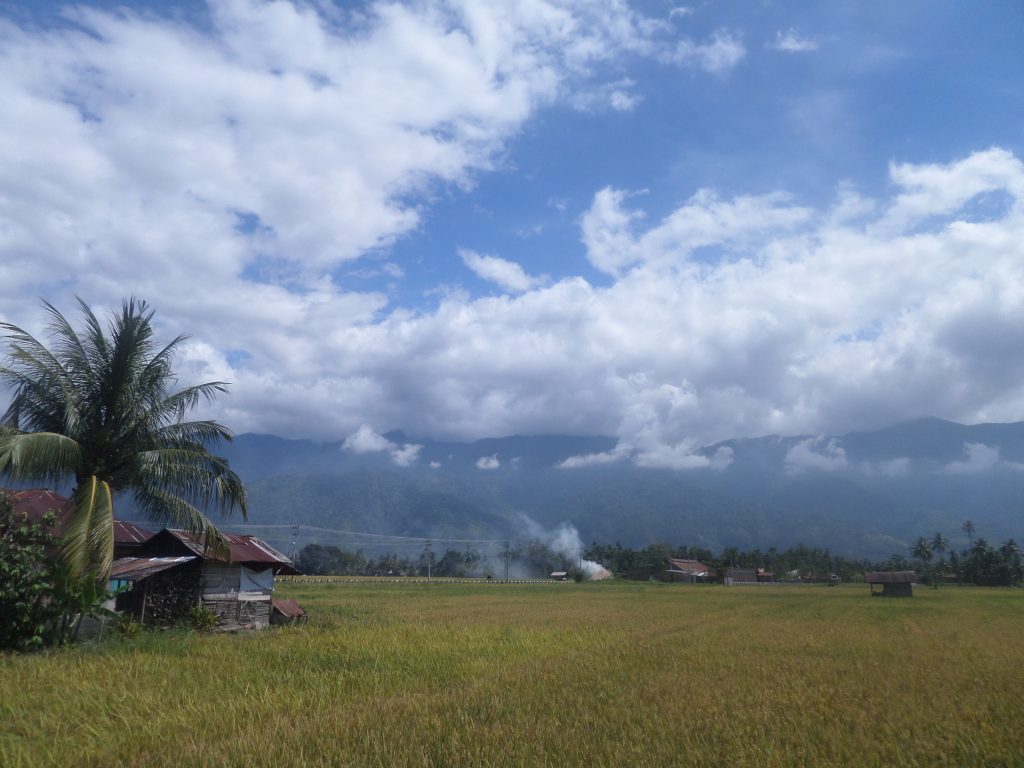
Most people will arrive at Medan airport before going to Ketambe. Although Ketambe is not awfully far from Medan as the crow flies, but since you will have to travel around a range of mountains, it will take a very long time. There are tips on how to get to Ketambe by public transport, but after spending a considerable time on researching the options and reading trip reports about it, I decided that saving a little money is not worth all that hassle and time and discomfort that using public transport would inevitably involve. So I decided to order a shared taxi from my guide.
For the shared taxi, I paid 400.000 one way. This was an excellent choice, because it was a door to door service, and the driver was already waiting for me at the airport when I arrived in Medan. There was a little miscommunication with my guide, Alex (whom I hesitate to recommend after all these problems in spite of the fact that he was a good guide otherwise).
We first agreed that he would organise a shared taxi for me from the airport to the guesthouse in Ketambe. But I had to ask him a lot of questions about how I will find the driver and other things. Then I heard from a local Indonesian that a shared taxi is actually a minibus, which I already knew and dreaded in West Sumatra. When I asked Alex, he acknowledged that it would indeed be a minibus, but said that it would be very comfortable. OK, I said. So at the airport, I was expecting a minibus, but no, it turned out to be a normal car, which I originally expected a shared taxi to be – with some other passengers besides me. Because of this misunderstanding, I also had this problem there, which is now funny, but at the time I didn’t find it very amusing at all – you can read about it here.
Alex also organised a shared taxi for me back to Medan airport, for the same price, but now with a different driver.
5. What can you do and see in Gunung Leuser
5.1 The stars of the jungle: Orangutans
Your guide will always tell you that the chances of seeing orangutans is about 75%, but I think they only want to prepare you for the worst case scenario. I have never talked to anyone or read a report from anyone who did not see at least one orangutan on the very first day of the jungle tour. I saw two on the first day, and then a mother and her baby on the second day, and then two more on the third day.
Expect to see them very high up on top of the tallest trees. Taking usable photos was actually impossible with my very small tourist camera, so I can’t actually show you here wonderful orangutan portraits. But you can be sure that you will see them close enough to enjoy the experience. I also saw one orangutan building a nest for her afternoon nap. They sometimes build one for a little rest, and then another one for the night somewhere else. You can sometimes see unused, old nests in the canopy.
Orangutans don’t usually come down to the forest floor. When they do, they want to find some special delicacies like grubs or other protein sources. But it is almost sure that they will not come down when they see humans down there.
Most of the orangutans in this area are already used to seeing humans down there, so they are not afraid of us, meaning you are not likely to chase them away with your presence – but anyway, it is always advisable to shut up when you are watching orangutans.
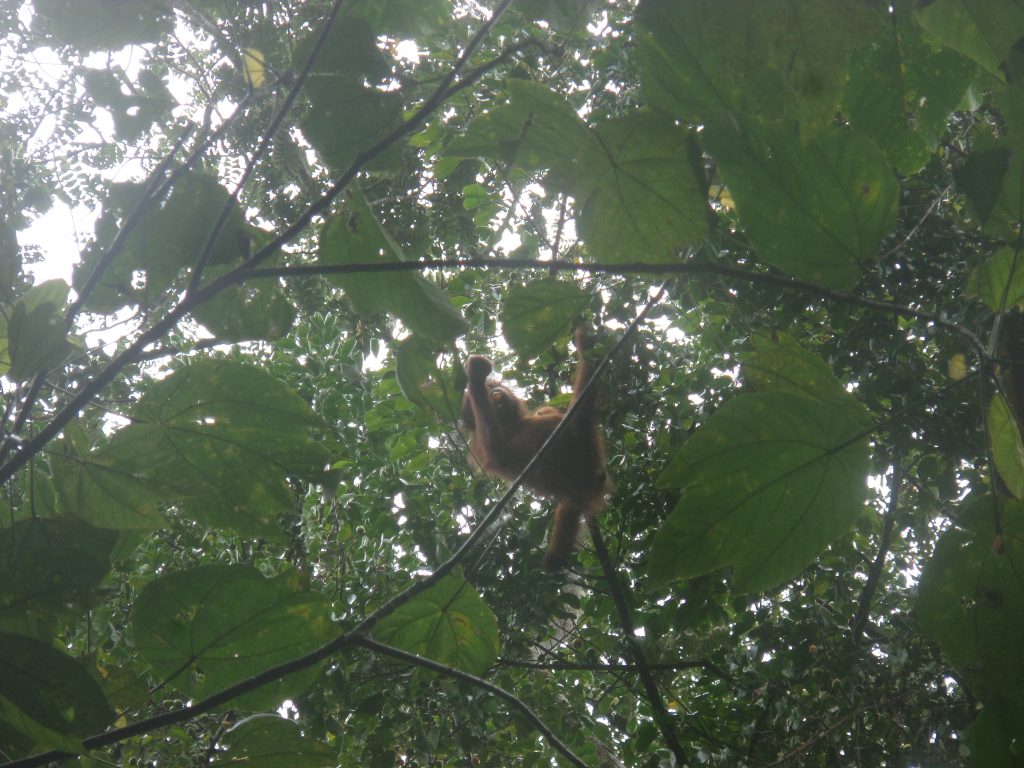
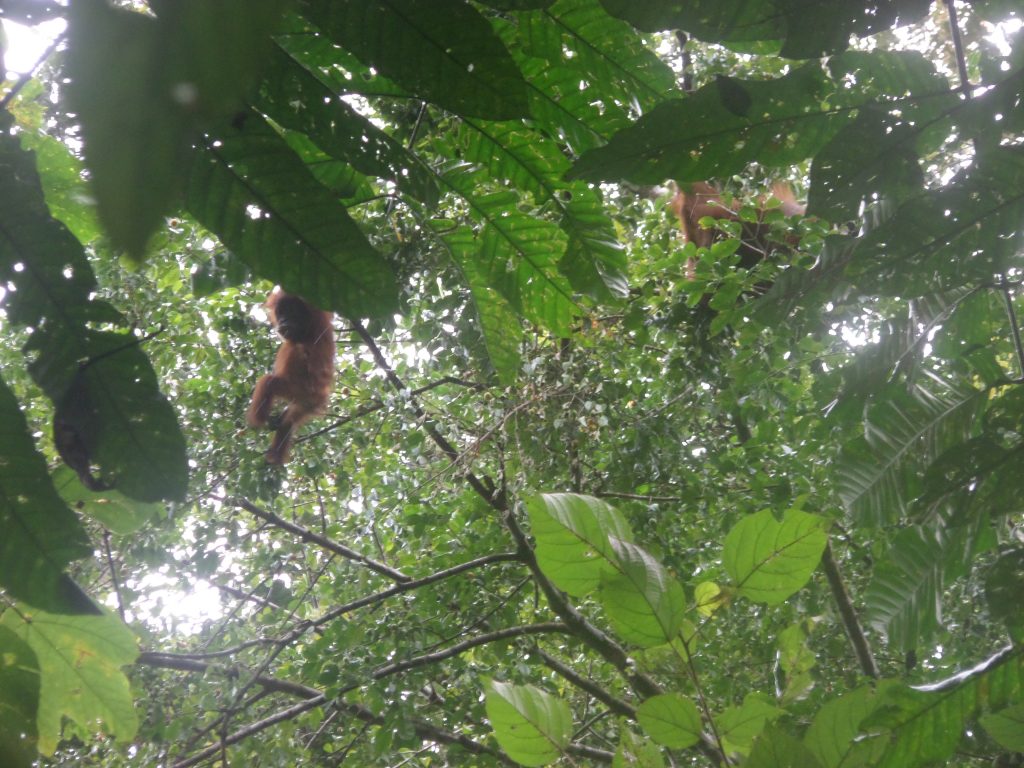
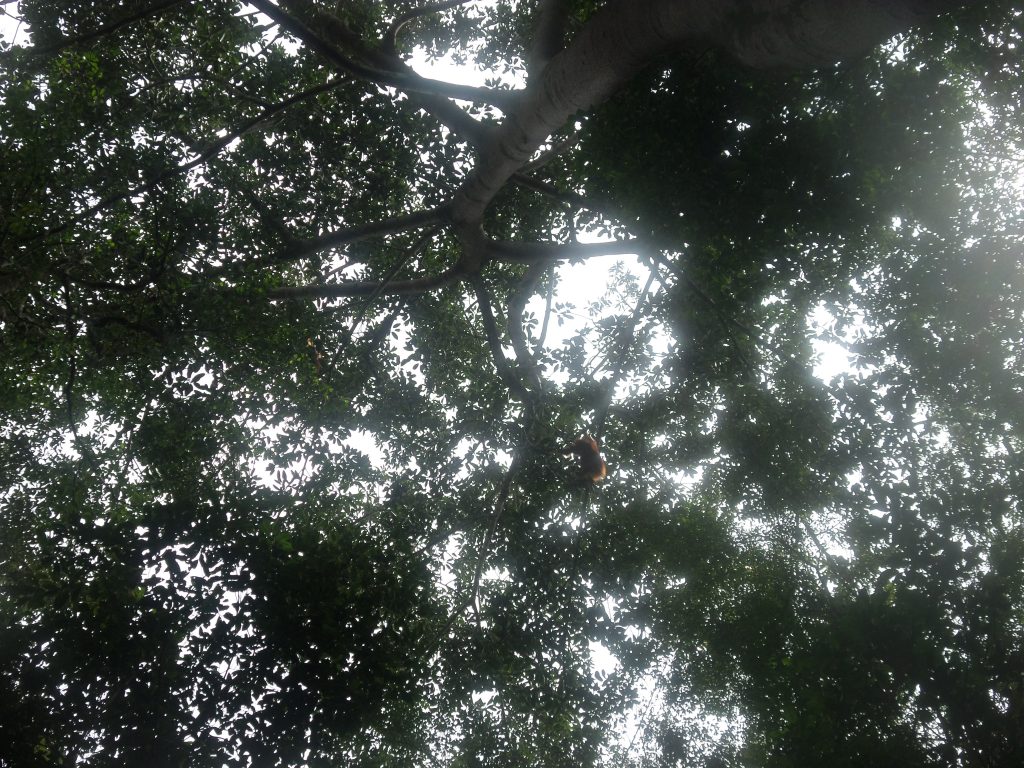
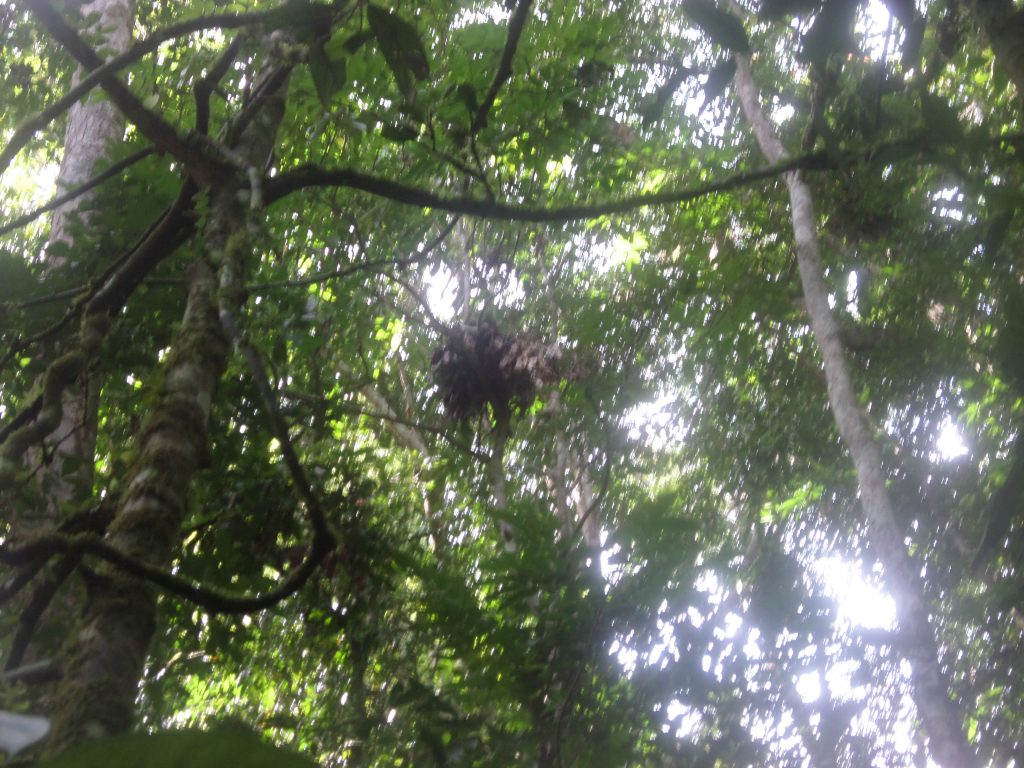
5.2 Gibbons, siamang, Thomas leaf monkeys
There are white and black gibbons, siamang and Thomas leaf monkeys in the area, and you can see most of them if you are lucky and if you spend more than one or two days in the jungle. The easiest to see is the Thomas leaf monkeys, who are very often jumping around and shouting (fighting) even around the guest houses. The white gibbon is the most difficult to see perhaps, but you can see siamang, which to me are the funniest of all monkeys. They like to stretch their arms behind their necks, and have a rest in this position for a long time, while looking around themselves,which is shockingly similar to human behaviour.
All of them are also likely to be very high up on the trees, except the Thomas leaf monkeys, which may sometimes be seen a little more closer. I now regret that I didn’t bring binoculars with me, because it is very difficult to seem them clearly otherwise. Taking good quality photos is of course only possible if you have the right equipment for that, which again, I didn’t.
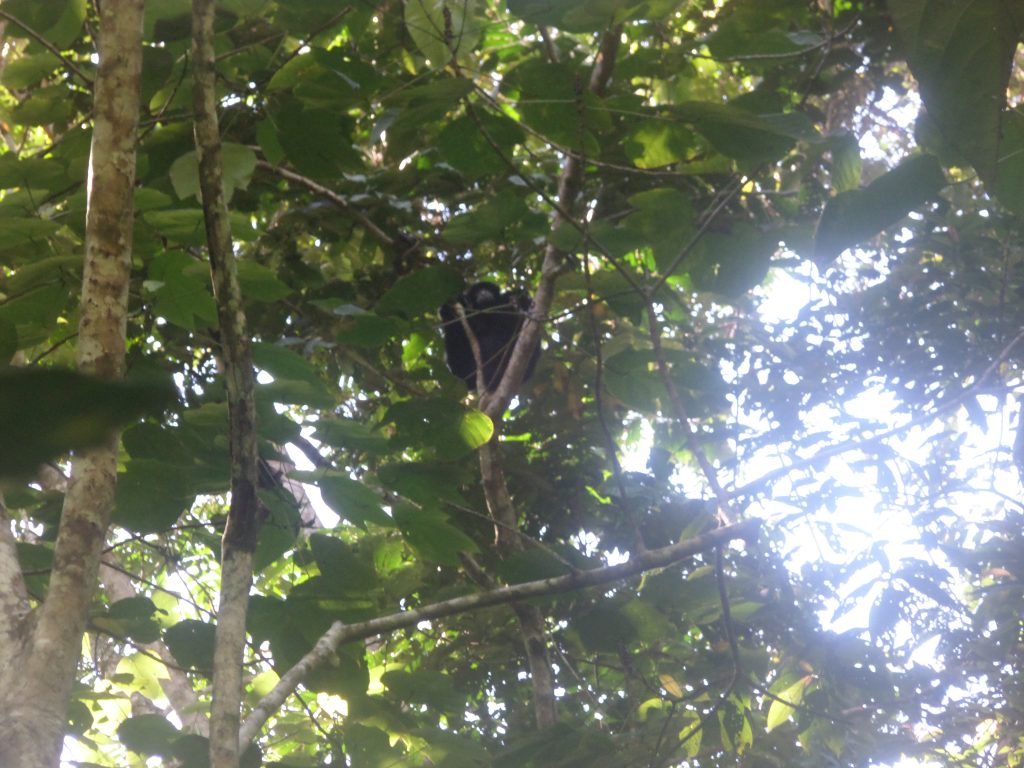
5.3 Smaller animals: snakes and bugs
There are dangerous snakes all around in the jungle, so make sure you have a good guide who will notice them and who knows how to avoid disturbing them. I also enjoyed looking at the small bugs, the grasshoppers, the special flies, the giant ants – the are everywhere – and others. Keen an open eye, the jungle is home to may-many more beautiful creatures than the large apes and monkeys.
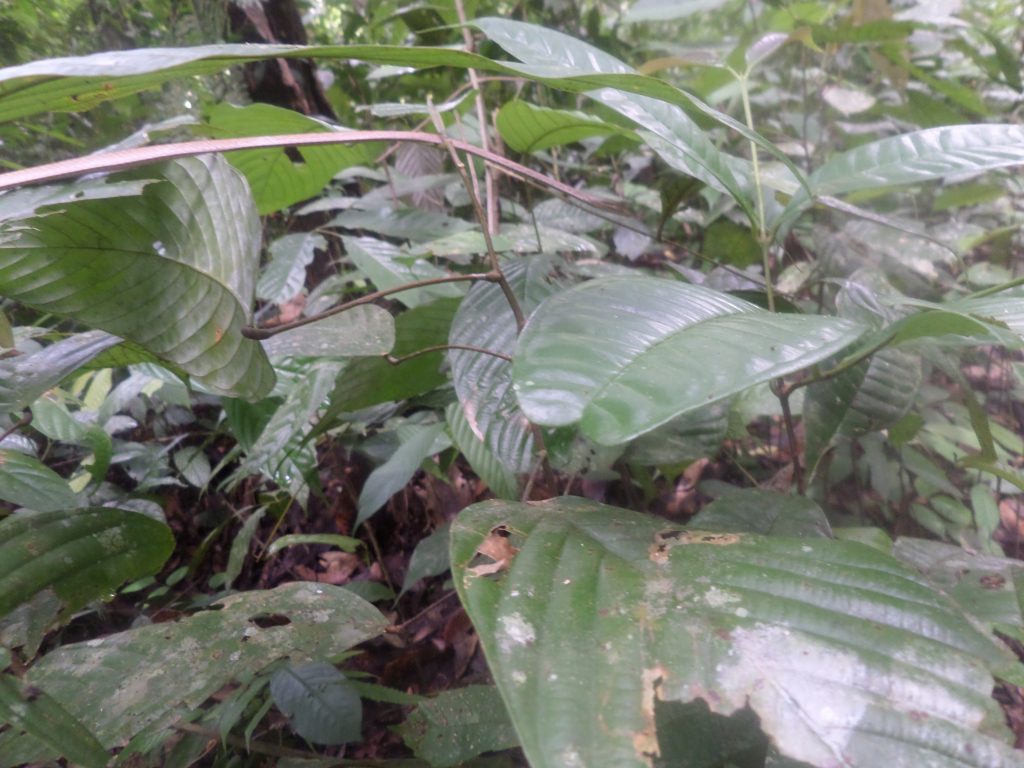
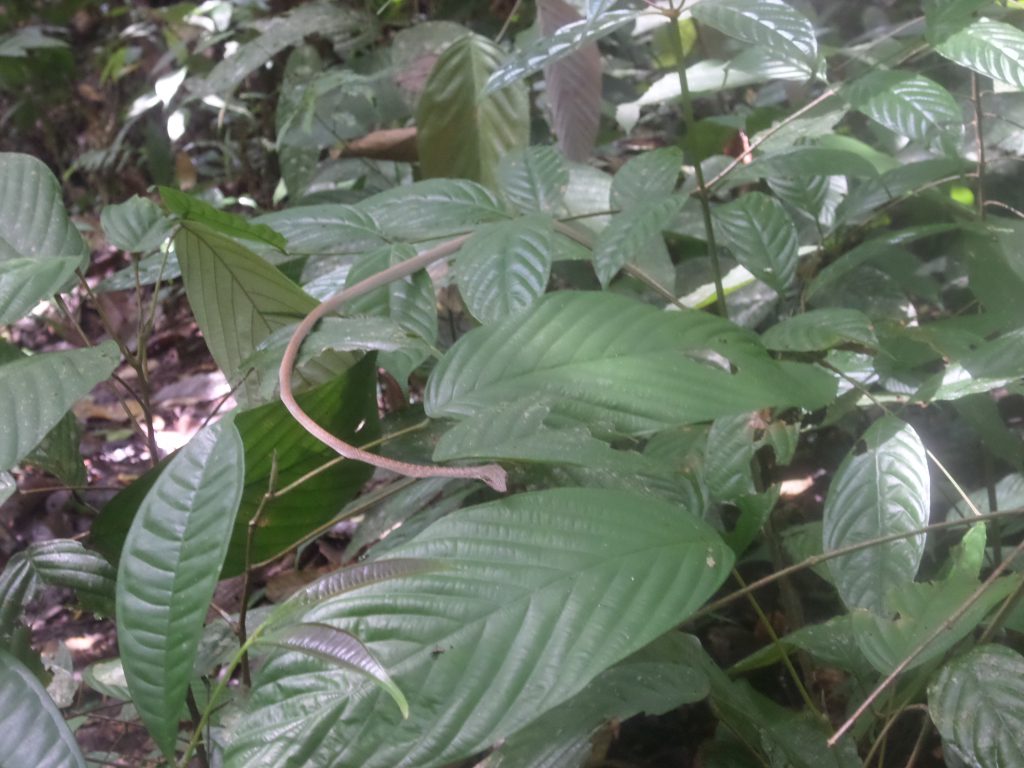
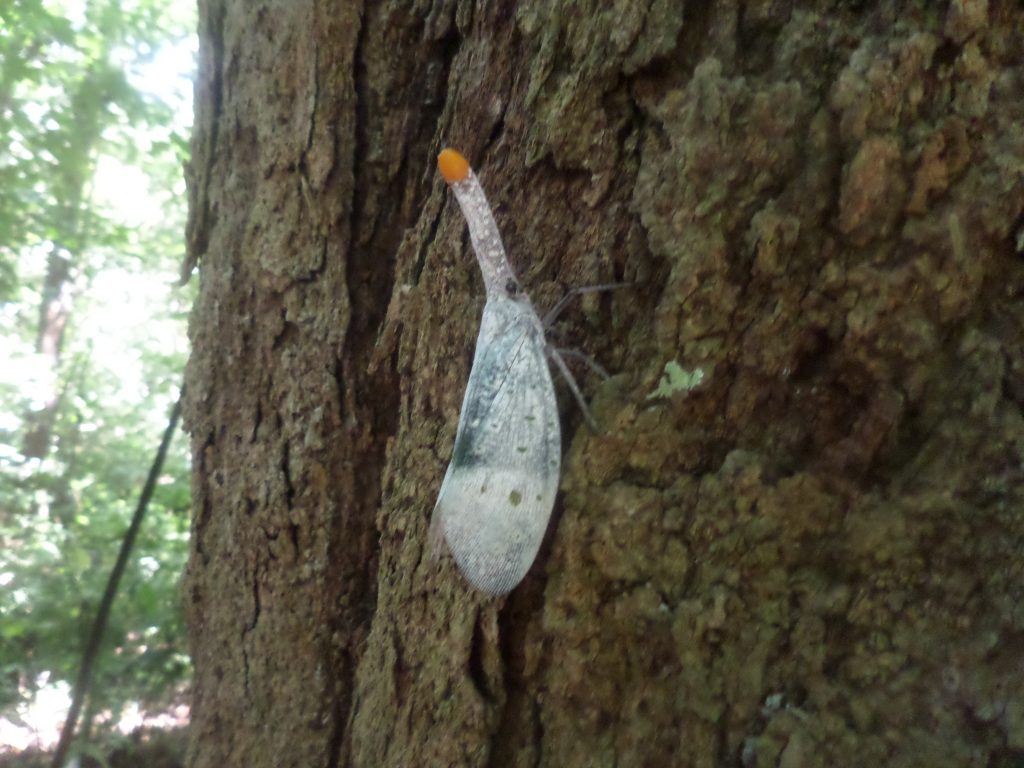
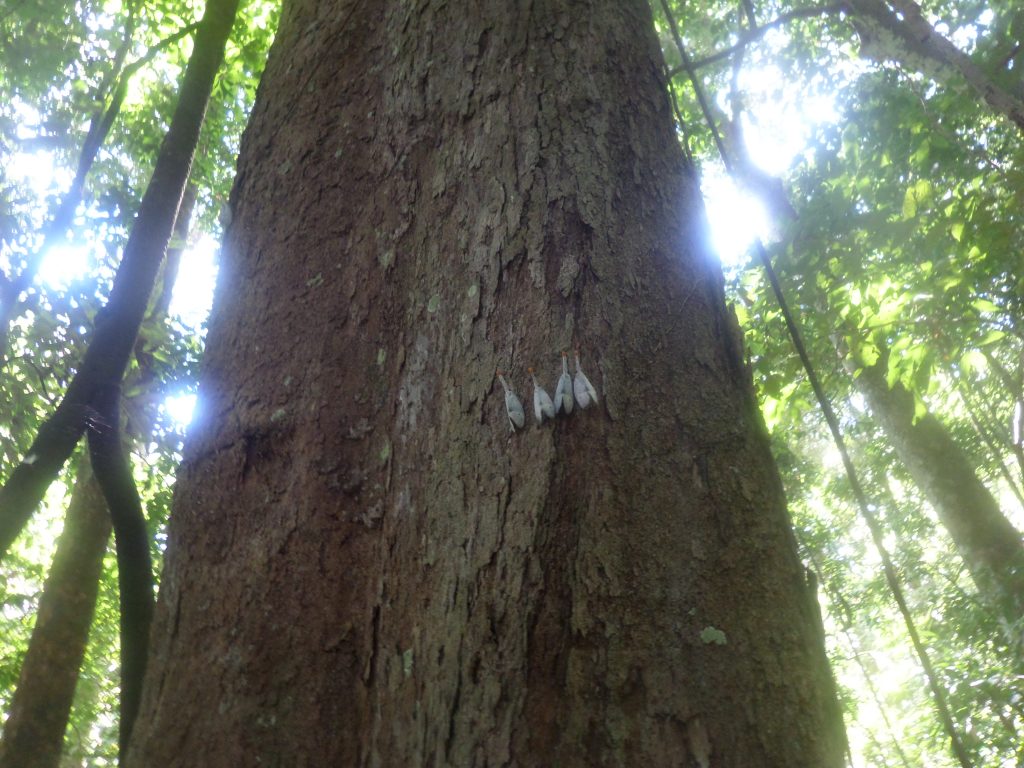
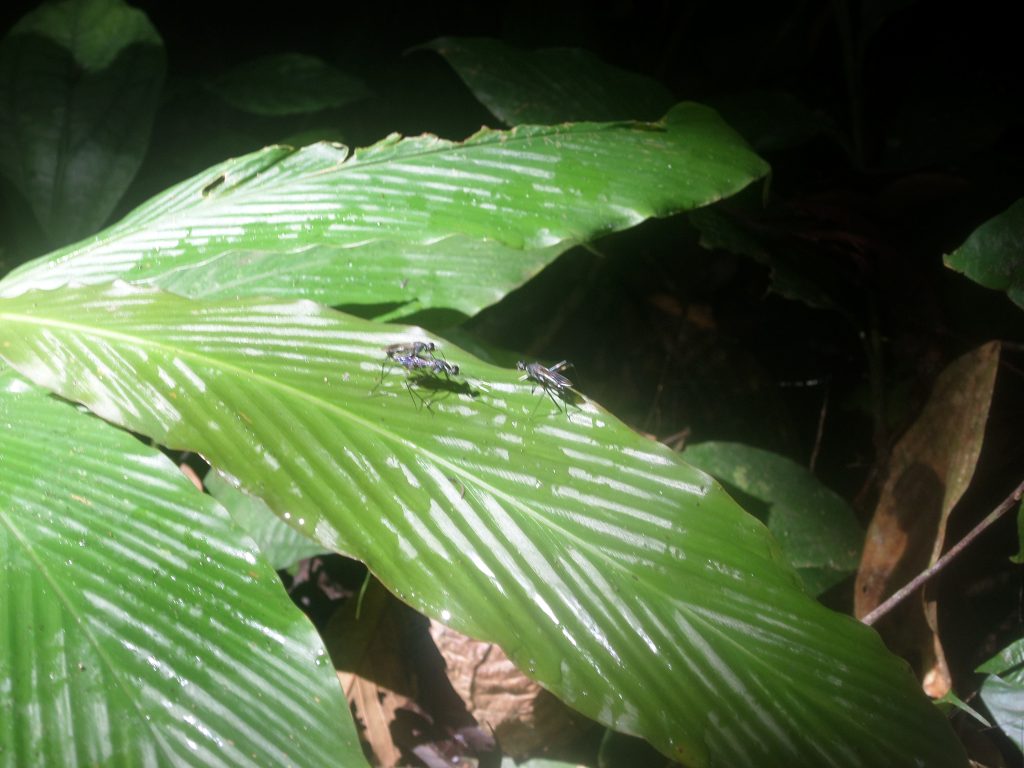
5.4 Plants, flowers, trees
For me, the jungle is always an exciting place even if I don’t see a lot of large animals. This was the case when I visited Bako National Park in Borneo, Taman Negara in peninsula Malaysia, the Penang national park or other jungles. And of course, it was a wonderful experience in Gunung Leuser, too.
I know there are a lot of people who enjoy the hiking itself, climbing higher and higher, and being “on the way”, and they quickly pass very beautiful plants, trees and flowers. My advice is that you should spend at least some time walking in the forest very slowly, and examine closely some of the plants around you. Some of them may not seem special at first sight, but if you have a closer look, you may discover how beautiful and interesting they are. Some of the trees are majestic, some others are very strange, and the lianas are always a wonder for me.
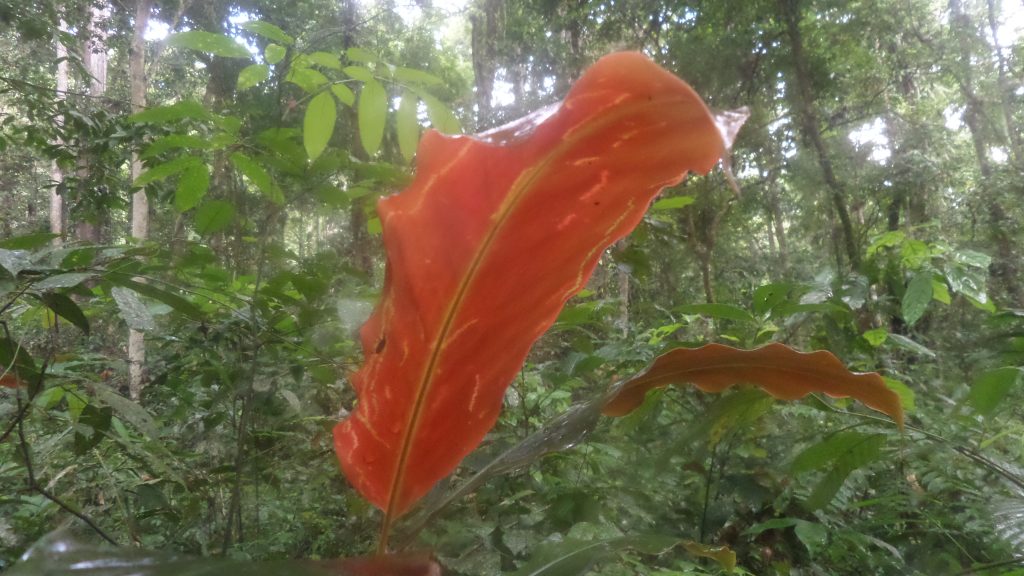
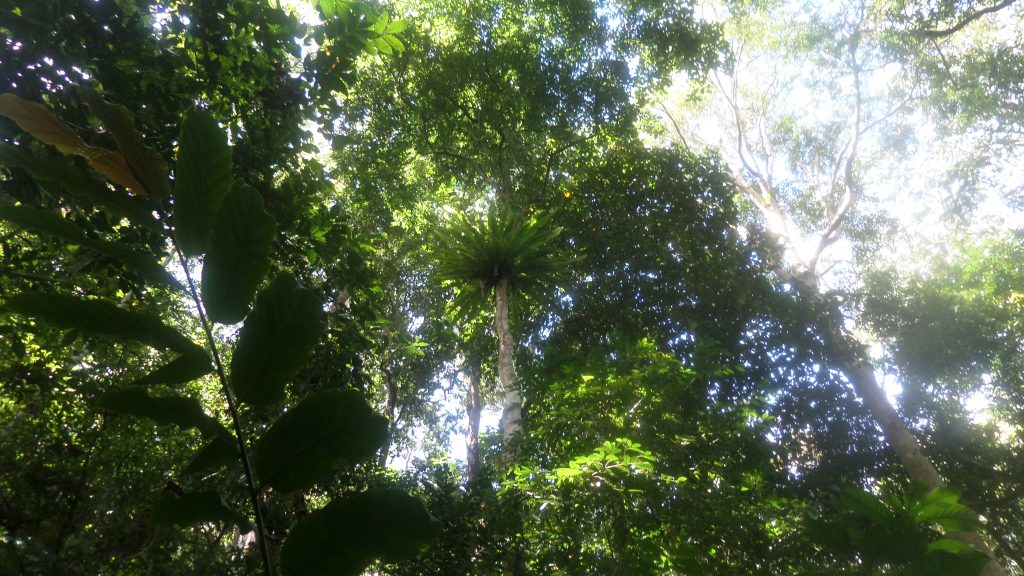
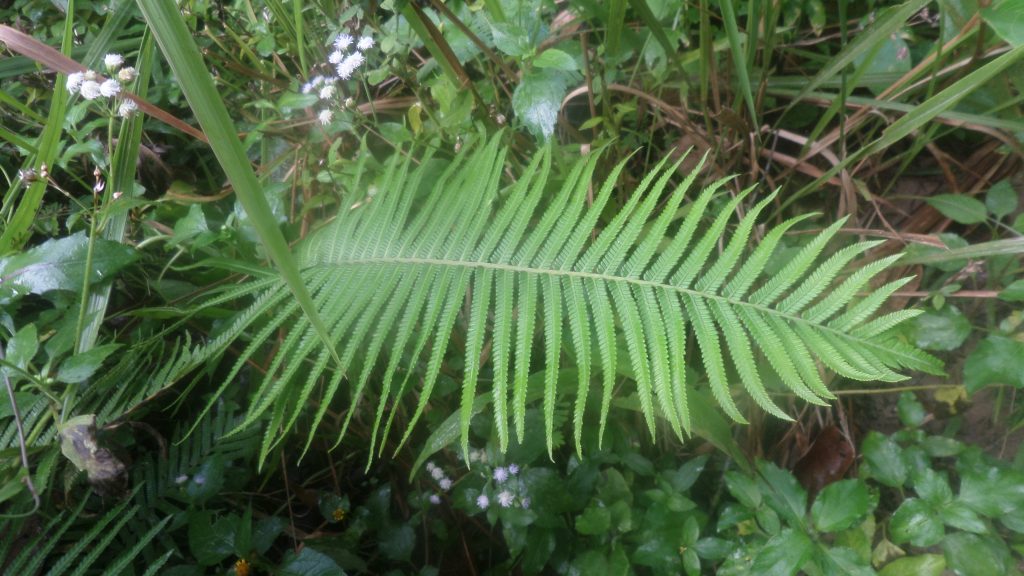
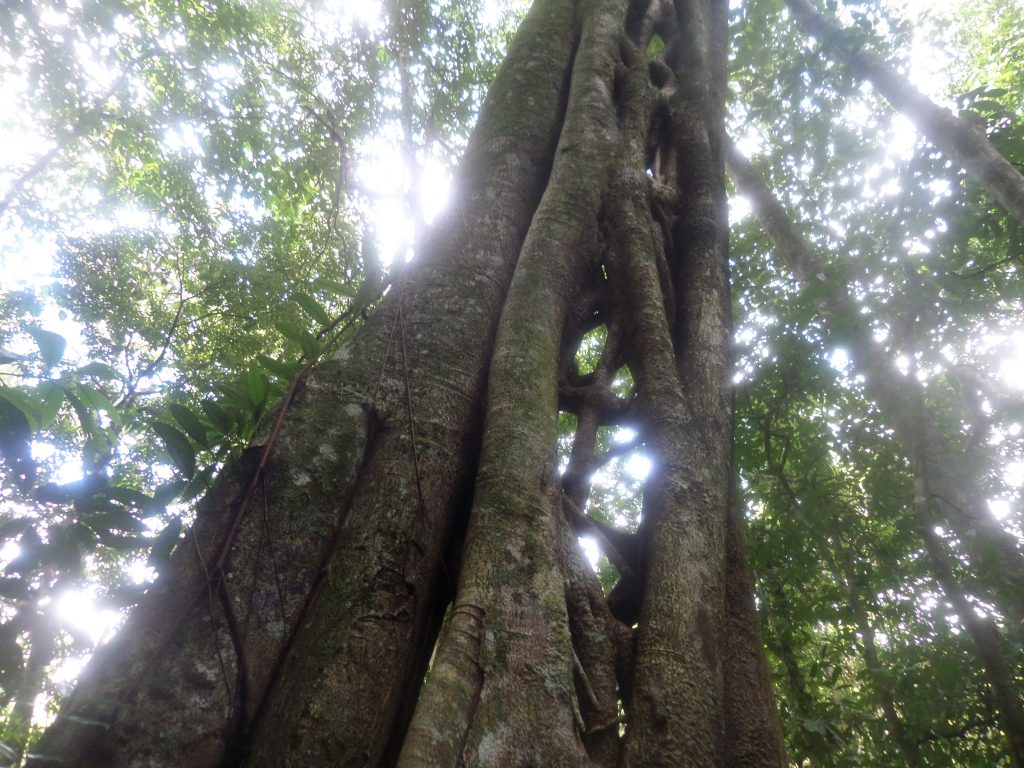
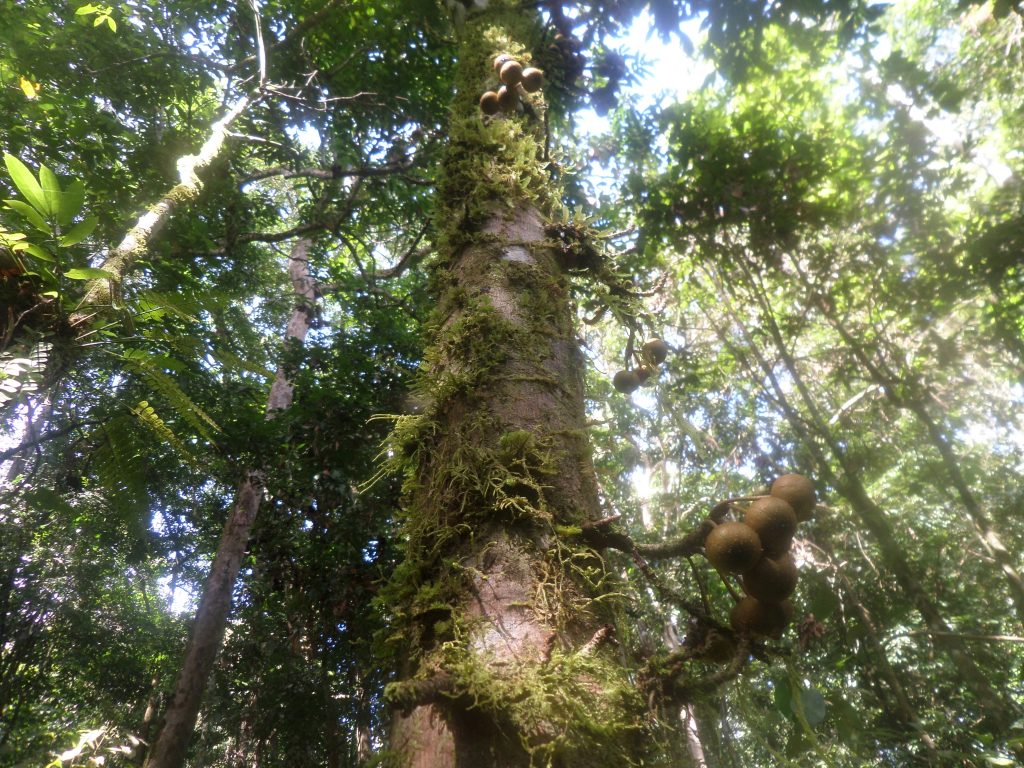
5.5 Camping in the wild
If you decide to spend the night (or two or more nights) in the jungle, you will sleep in a makeshift tent near the river. There is a camp there that is used by all the guides, and they have already set up fire places and materials for constructing the tents there. Solo female tourists should be aware that there will be one tent for you and your guide, who is going to be a man. So choose one that you can trust.
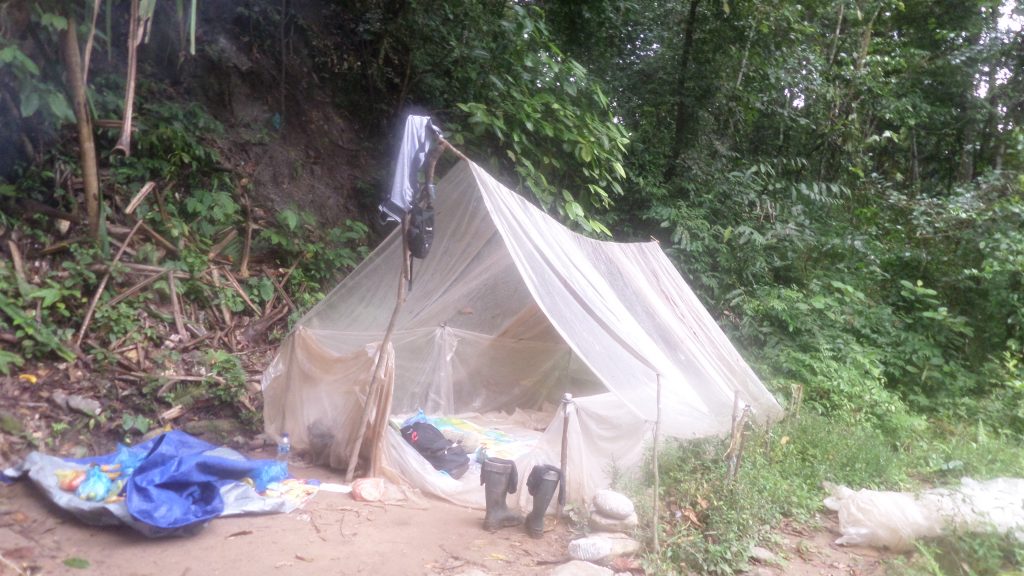
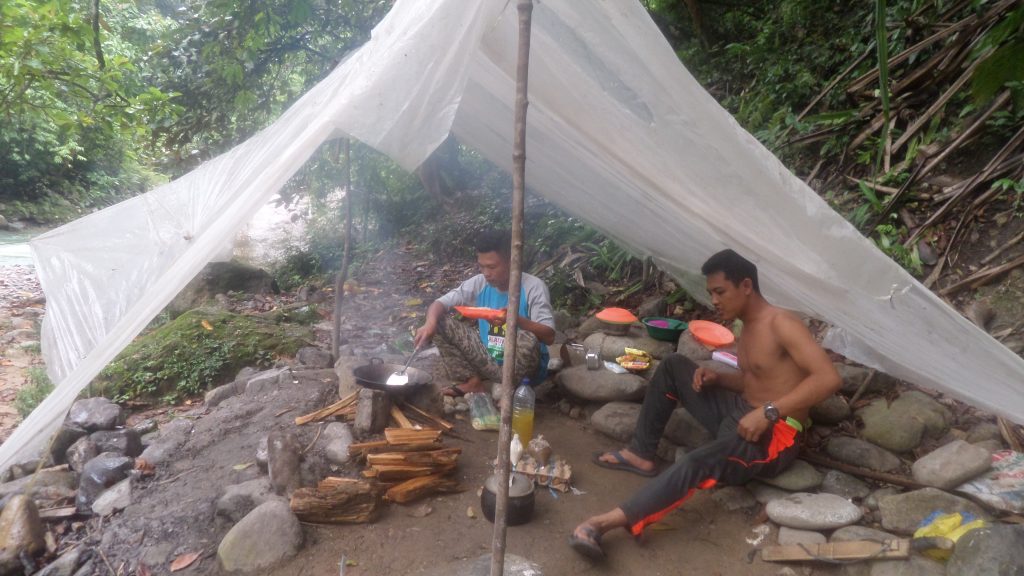
This is a place where you will meet other tourists as well, which can be a good opportunity to exchange experiences with each other. I was there during the low season (the European winter), and I only saw a few other tourists in the camp. In the high season, there will be many more, and my guide said to me that even the jungle may at times be a little crowded, so you will hear and see other groups walking around trying to spot orangutans.
This is also the place where you can clean yourself in the river. For toilet, you will use any space in the jungle that you think is far enough from your tent. If you don’t have experience in it: you first try to dig a hole in the ground if possible, if not, just go ahead and do your thing on the ground.After you’ve finished, cover it with earth and leaves. You can use a stick for this. Be very careful when you are trying to find a spot: check the surroundings carefully and make sure there are no snakes waiting to bite you while you are squatting. And avoid ant nests, too for obvious reasons.
Beware of macaques: they will steal your food, and perhaps some of your bags too, if they think they contain food. Our tent was robbed by them during the night – we had some leftovers from dinner packed in a bag, but they found everything ad stole them.
